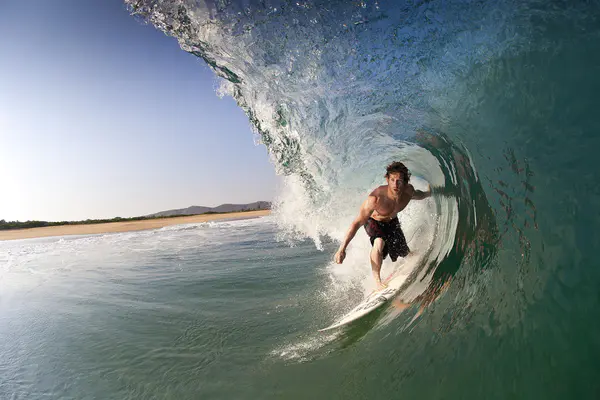Surfing is an exhilarating water sport that demands a unique blend of physical skills. Among these skills, balance stands out as the most crucial. Whether you’re a novice catching your first wave or a seasoned pro tackling massive swells, maintaining balance is key to staying on the board and riding the waves effectively. This article will delve into how surfing uses balance, the mechanics behind it, and the techniques to improve it.
The Importance of Balance in Surfing
Balance is the foundation of surfing. Without it, staying upright on a surfboard would be nearly impossible. Here’s why balance is so vital:
- Staying Upright: To ride a wave, you need to remain standing on your board. Balance helps you stay upright and avoid falling into the water.
- Navigating Waves: Waves are constantly changing. Good balance allows you to adjust quickly to these changes.
- Performing Maneuvers: Advanced surfing involves tricks and turns. These maneuvers require excellent balance to execute correctly.
The Science of Balance
Balance in surfing is not just about standing still. It’s a dynamic process involving multiple systems in the body. Here’s a closer look at the science behind it:
- The Vestibular System: Located in the inner ear, this system helps you sense changes in motion and orientation.
- Proprioception: This is your body’s ability to sense its position in space. It helps you feel where your limbs are without looking at them.
- Visual Input: Your eyes provide important information about your surroundings and help you gauge distance and movement.
How Surfing Challenges Balance
Surfing constantly challenges your balance through various factors:
- Moving Surface: Unlike stable ground, a surfboard on water is always moving.
- Wave Dynamics: Waves can be unpredictable, requiring quick adjustments.
- Body Movements: Paddling, standing up, and performing tricks all demand precise balance.
Developing Balance for Surfing
Improving your balance can significantly enhance your surfing skills. Here are some effective methods:
- Balance Boards: These simulate the instability of a surfboard and help train your core and leg muscles.
- Yoga and Pilates: These practices improve flexibility, strength, and balance.
- Strength Training: Strong muscles, particularly in the core and legs, support better balance.
- Surf Practice: The more you surf, the better your balance will become due to muscle memory and experience.
Techniques for Better Balance on the Surfboard
Here are some specific techniques to improve your balance while surfing:
- Proper Stance: Keep your feet shoulder-width apart, knees slightly bent, and weight centered.
- Engage the Core: A strong core helps stabilize your body.
- Look Forward: Focus on where you want to go, not on your feet.
- Stay Relaxed: Tension can throw off your balance. Keep your body relaxed and flexible.
See Also: Which Beach Has Water Sports in Goa?
Common Balance Mistakes in Surfing
Avoid these common mistakes to maintain better balance:
- Stiff Body: Staying too rigid can make it harder to adjust to the wave.
- Wrong Stance: Placing your feet too close together or too far apart can destabilize you.
- Ignoring Core Strength: Neglecting core exercises can weaken your balance.
Exercises to Improve Balance for Surfing
Incorporate these exercises into your routine to enhance your balance:
- Single-Leg Stands: Stand on one leg for as long as possible. Switch legs.
- Balance Board Drills: Practice various movements on a balance board.
- Core Workouts: Planks, Russian twists, and leg raises strengthen the core.
- Flexibility Exercises: Stretching and mobility work improve your body’s adaptability.
The Role of Equipment in Balance
The right equipment can also affect your balance on the surfboard:
- Board Size and Shape: Different boards offer varying levels of stability.
- Fins and Leashes: Properly set up fins and leashes can enhance control and balance.
- Wetsuits and Gear: Appropriate gear can improve comfort and performance, indirectly aiding balance.
Mental Focus and Balance
Balance is not just physical; it’s also mental:
- Concentration: Focus on the task at hand without getting distracted.
- Visualization: Visualize your movements and the wave to prepare your body.
- Confidence: Trust in your abilities to maintain balance.
Real-Life Examples of Balance in Surfing
Many professional surfers have mastered balance to perform incredible feats:
- Kelly Slater: Known for his remarkable balance and control.
- Stephanie Gilmore: Her smooth style showcases excellent balance.
- Laird Hamilton: Famous for riding massive waves, requiring extraordinary balance.
Challenges and Solutions in Achieving Balance
Surfing presents various challenges, but with practice and the right techniques, these can be overcome:
- Rough Waves: Practice in different conditions to improve adaptability.
- Fatigue: Build endurance to maintain balance even when tired.
- Fear of Falling: Build confidence through gradual progression and positive experiences.
Conclusion
Balance is the cornerstone of successful surfing. By understanding its importance, the science behind it, and the techniques to improve it, you can enhance your surfing skills. Regular practice, both on and off the water, combined with mental focus and the right equipment, will help you achieve better balance and enjoy surfing to the fullest.
Incorporate balance training into your routine, stay patient, and enjoy the process of becoming a more balanced and skilled surfer. Happy surfing!

